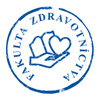THE ISSUE OF CLOSTRIDIUM DIFFICILE IN GERIATRIC NURSING
ŠTEFKOVIČOVÁ Mária1,2, LITVOVÁ Slavka1, MATIŠÁKOVÁ Iveta 2, DROBNÁ Terézia3
1 Regionálny úrad verejného zdravotníctva so sídlom v Trenčíne,Trenčín
2 Fakulta zdravotníctva, Trenčianska univerzita Alexandra Dubčeka v Trenčíne, Trenčín
3 Fakultná nemocnica Trenčín, Trenčín
ABSTRACT
Background: Clostridium difficille is one of the most severe nosocomial pathogens. It occurs in intestinal tract normally. It is highly resistance in the spore form and persists in the hospital environment for a long time. C. difficile toxins cause diarrhea, including severe forms of enterocolitis. Infection often occurs after antimicrobial treatment and the nosocomial spread is significant. Infected patient excrete bacteria by stool, contaminate his environment and subsequently bacteria are transmitted to another patients by hands.
Aim: In patients from Region of Trencin reported in EPIS (epidemiological information system) identify incidence of patients with enterocolitis due to C. difficile, proportion of nosocomial forms and its distribution by ward. Propose ade-quate control measures according to review of literature.
Materials and methods: Sample consisted of patients from Region of Trencin with enterocolitis due to C. difficile (A 04.7 according to ICD-10) reported into EPIS. Review of literature was made from guidelines of expert organisations and insti-tutions available online.
Results: 220 cases of enterocolitis due to C. difficile was reported into EPIS from 2008 to 2013, 176 (80%) of them were nosocomial. Proportion of nosocomial enterocolitis due to C. difficile from all reported cases of nosocomial infections is 12.9% in the region. Distribution of nosocomial enteroco-litis due to C. difficile by ward: internal medicine 35%, geria-trics 23%, orthopedics 13%, general surgery 9%, other 30%.
The most important measures in prevention of nosocomial spread of enterocolitis due to C. difficile are: isolation of patient, washing hands with water and soap, using gloves, performance of barrier nursing techniques, individualization of medical equipment and their disinfection with sporicidal disinfectants, adequate disinfection of patient environment and revision of antimicrobial treatment. To prevent transmission of C.difficile care bundle approach is recommended.
Summary: Nosocomial enterocolitis due to C. difficile is serious medical, economic, but also society-wide problem for high morbidity and mortality. The good knowledge of control measures is one of the preconditions for problem solving.
Key words: C. difficille. Enterocolitis due to C. difficile. Nursing. Geriatrics.












